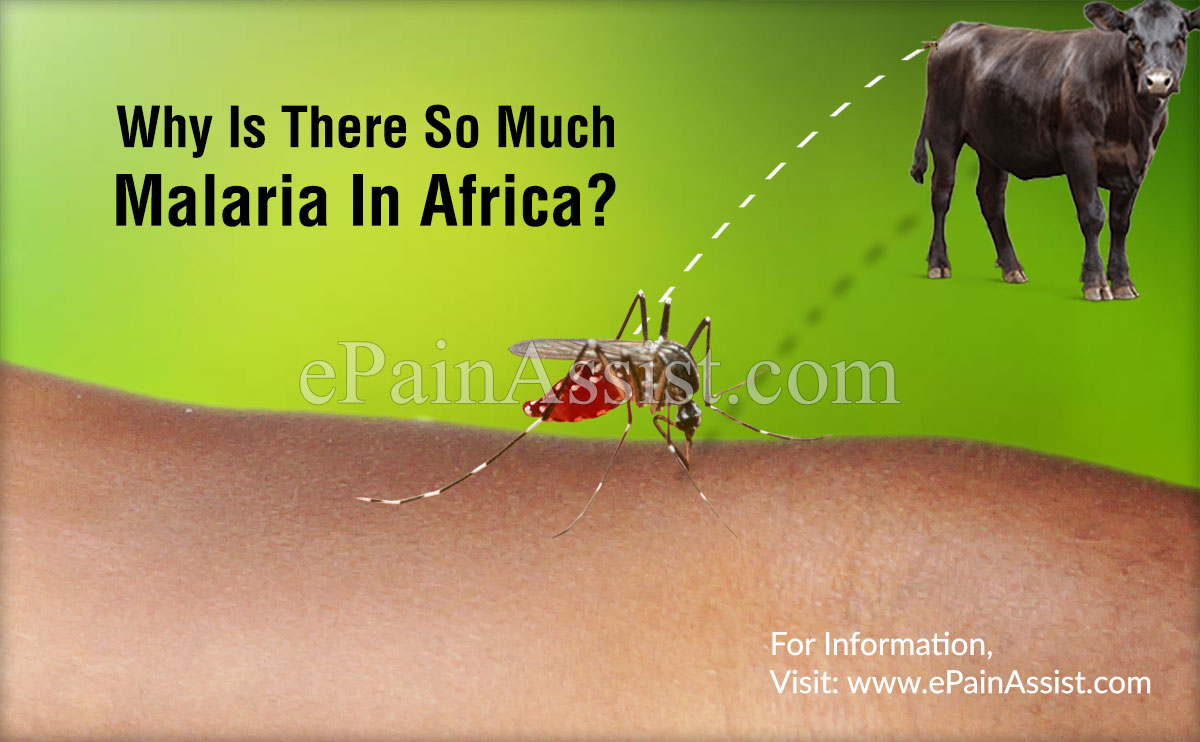Malaria is a common infectious disease in Sub-Saharan Africa responsible for 90% deaths in these areas. Malaria is a serious disease caused by a parasite named Plasmodium. It is easily transmitted by a female mosquito of Anopheles species. These parasites enter the human body through the saliva of mosquito and grow and reproduce on human liver cells and RBCs causing anemia in body with other symptoms. The climatic conditions, poverty, the specific vector, drug resistance, and human immunity in Africa support the high incidence of malaria cases in these areas.

Why Is There So Much Malaria In Africa?
The condition of malaria is worst in Africa. Nearly every person in Africa suffers from malaria at least once in a year. The mortality rate for malaria patients is 90% and for children under five years is 60%. The spread of malaria is higher in Africa than any part of the world, because malaria has also evolved with the evolution of humanity.
The reasons behind so many cases of malaria in Africa are following-
Climate: Malaria is transmitted by female Anopheles mosquito. The parasite remains in the gut of the mosquito and mosquito is infective when parasite comes to its salivary glands in the stage of sporogony. If the mosquito dies before this stage, it is no longer infective. The warm weather promotes the faster shift of parasite to sporogony stage and mosquito becomes infective faster. The warm temperature reduces the length of parasite development and people are more bitten in such weather. Thus, the Tropical region provides warm climate and Africa is paradise for Plasmodium to flourish.
Breeds of Mosquito: Some species of mosquito feed on cattle more than human. Unfortunately, Africa encounters those breeds of mosquito that feed on human beings more than cattle. The main breed of Anopheles bites human more in Africa than any other areas of the world. Thus, the chance of transmission of malarial parasite increases drastically in these areas. This ecological difference is one of the reasons for the high prevalence of malaria in Africa.
Financial Condition: Most of the population of Africa come under low-socioeconomic status and live in rural area. Due to poverty, they are uneducated and do not bother about hygiene and sanitation. They can’t afford mosquito repellants and bed nets and medications after catching malaria. Moreover, urbanization is growing in Africa, leading to more rapid migration of rural people to urban areas. Thus, urbanization provides chances of more breeding of infected mosquitos due to more accumulation of water sources.
Drug Resistance: People of Sub-African region develop drug resistance. The main reason behind drug resistance is the incomplete course of medication. The people stop taking antimalarial drugs before complete cure due to its side effects, less knowledge about resistance and poor socioeconomic condition. They have lack of food to consume with medicines, thus they have to leave medication. More they get re-infected; they tend to develop more drug resistance.
Political Issues: Many countries of sub-African areas are under debt and they do not possess national budgets to take effective action against malaria. These countries were under foreign rule and were politically out of the map, thus couldn’t get enough aid from WHO. This also promoted transmission of malaria. These regions have also developed resistance against DDT and chloroquine leading to the more drastic spread of malaria.
Immunity Challenges: The people in Sub-Africa do not have healthy immunity. They cannot afford healthy food, proper sanitation, and medicinal support. According to WHO, the incidences of HIV/AIDS, lower respiratory tract infections, diarrheal diseases and stroke are high in the Sub-African belt. Thus, infection by the malarial parasite is easily caught by the immune deprived people.
- World Health Organization (WHO). Malaria https://www.who.int/news-room/fact-sheets/detail/malaria
Also Read:
